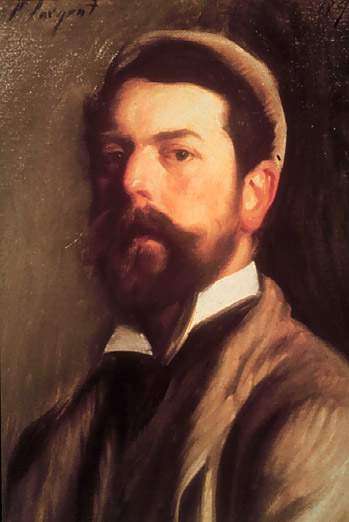As I walked through the Metropolitan Museum of Art, gaping at gargantuan sculptures and carvings from Southern and Eastern Asia, I had an urge to head, once again, to the European art exhibit. As I passed through many lively works of landscapes, biblical imagery, and portraits, the group of paintings that made me halt to a stop was Peter Paul Ruben’s exhibition. Indeed, this is the central characteristic of Ruben’s work, his figures seem as though they were imbued with life and emotion the moment his brush touched a canvas.
Particularly striking was the Flemish painter’s Wolf and Fox Hunt ca. 1615-21. The oil painting creates a vibrant, violent situation that engenders the viewer’s appreciative awe, yet hesitance in approaching it because of its realism. In addition, the painting’s vast proportions, at 8 feet by 12.3 feet, truly took me into a moment of historical fantasy, as if I was actually within the work of art itself. The immediate focus of Ruben’s Wolf and Fox Hunt for me was the clash of the point of a spear with the teeth of a snarling wolf. Amongst all the impending thrusts of more spears and the frightened trampling of two horses, the central conflict in the heat of the moment is the grind of teeth and the metal. The standing wolf, seems to embody human qualities, as it defies his own imminent death by attempting to grab the spear and break it with its canines. Although diminutive compared to its surrounding opponents, its venomous, infuriated demeanor, and serpentine twist of the body produces a violent aura I have never seen prior in paintings.
The unfolding battle also produces a sense of sympathy for the victims: the wolves and the foxes. The united force of animals inevitably face death as they are surrounded by an onslaught of merciless hunters. A man’s head within the center of the violence blows a trumpet as if to highlight the moment as a sacrificial ritual. The second wolf that staggers besides its companion, anticipates the sudden mauling by two dogs. It is as if it is trying to protect the corpse of a dead comrade. Another feeling of empathy gained from this piece is when an injured fox tries futilely to prevent one of the horses from moving by grabbing at its hoof with one paw. The overall actions by the animals and the hunters cannot help but produce a sense of courage and unfortunate sadness that befalls them.
Ruben’s piece is also intriguing because the skirmish within the painting happened in a cleared landscape. It is unusual that such predatory creatures would be subject to a brutal ambush as depicted in the scene. In addition, the ground shifts from barren soil to the green of the grass and forest into the far distance. The angle of the battle in which it was painted at also plays an important role for the viewer. The cloudy sky fills up more than half of the background, which produces an illusion that the figures are bigger than normal, thus further making the situation more life-like. Although Rubens painted this work during the early 17th century, the positioning of the white horse uncannily resembles the well-known revolutionary imagery of Napoleon or that of George Washington on their white stallions. The colors that Ruben uses also creates a conspicuous division of tones at the center of the painting. On the right side contains the majestic white horse with its rider that attempts to “purify” the darker toned “evils” or the foxes and wolves located on the left side.
Another one of Ruben’s paintings that seized my attention was his A Forest at Dawn with a Deer Hunt ca 1635. At first I thought the image was a pitch black night scene because of the dimly lit exhibition room, but as I moved closer I began to see a faint light of a sunset between two twisted trunks, and the intricately painted branches of trees. As I analyzed the shadowy forest ground, it soon became decorated with many dried leaves, and a few frolicking deer appeared. The entire painting soon embodied a sense of a change in light and darkness, which is prevalent in many of Ruben’s works. It also symbolized a cycle of life and death or growth and decay in that the dying leaves would provide nourishment for the surrounding soil and further benefit the ecosystem. The change in sunlight also presents a renewal of daily life after darkness fades.
Many of Ruben’s other works also contained the motif of forest backgrounds, as well as light contrasting with darkness to draw the viewer’s eyes to various portions of his paintings with one glance. The clothing that he painted flowed and wrinkled on the individuals’ bodies. Other paintings also contained references to Roman mythology, such as with the goddess Venus, and Christianity. The figures within these works displayed life-like gestures and poses. What struck me as fascinating was Ruben’s exhaustive work on his figures’ hands. They seemed well in sync with each character’s persona due to the differentiated tones and texture of their skin.
Ruben’s masterpieces entice the viewer to turn their heads immediately after glimpsing the work within their peripheral vision. As you approach some of his pieces you begin to see life-like representations, the spirit of his art, and the figures that suddenly appear as though they were summoned by our own imagination. He presents mythical or unusual situations that allows the viewer to ponder deeply. Most of all, some pieces of his work seem to send a more personal message to the audience for them to formulate through the symbols and actions he portrays. There is no doubt that his artistic vision and legacy will shape you as you come across his canvases.





















Recent Comments